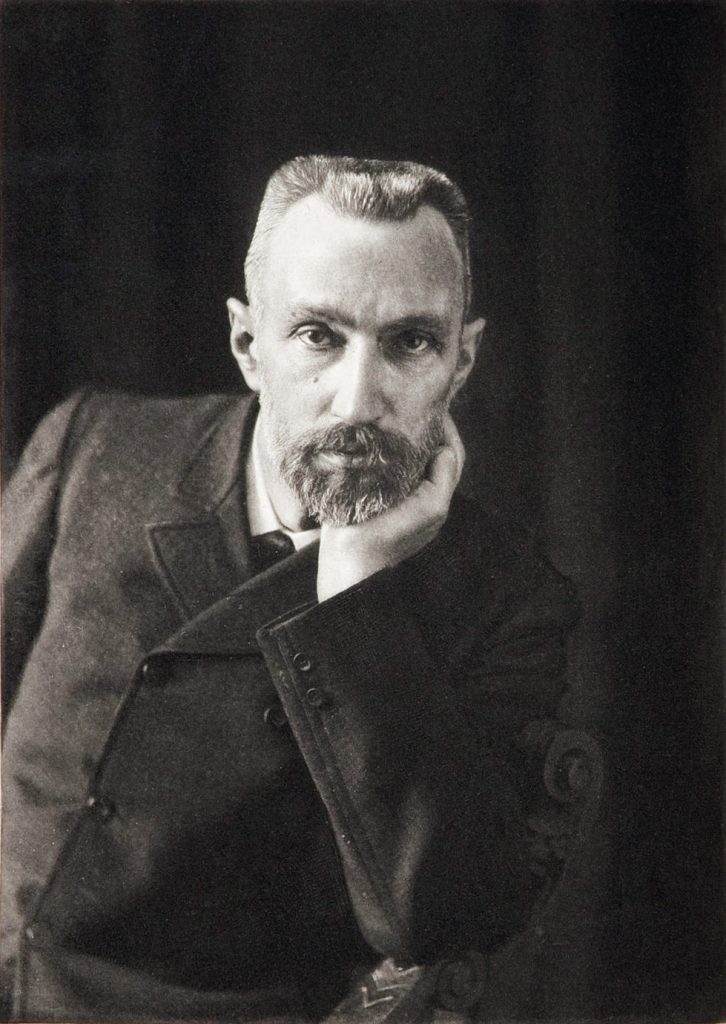Pierre Curie (1859-1906) was a French physicist and winner of the 1903 Nobel Prize in Physics.
Curie was born in Paris on May 15, 1859. He received much of his early education at home, where he showed an interest in mathematics. In 1878, Curie received a License in Physics from the Faculty of Sciences at the Sorbonne. He continued to research at the Sorbonne until 1883. At the Sorbonne, Curie conducted studies on the electric properties of crystals and discovered piezoelectricity with his brother Jacques.
Curie joined the faculty of École Supérieure de Physique et de Chimie Industrielles (Industrial Physics and Chemistry Higher Educational Institution) in Paris. He later obtained a Doctor of Science degree from ESPCI and was appointed Professor of Physics. In 1900, he became a professor in the Faculty of Sciences at the Sorbonne.
In 1895, Curie married fellow physicist Marie Curie (née Sklodowska). They began doing research on radioactive materials together following Henri Becquerel’s discovery of radioactivity in 1896. In 1898, the Curies announced the discovery of radium and polonium. Pierre also voluntarily exposed himself to radiation to test its effects in 1900, after hearing of a similar study conducted by Friedrich Giesel. In 1903, the Curies, along with Henri Becquerel, were jointly awarded the Nobel Prize in Physics for their research.
On April 19, 1906, a rainy day, Curie slipped and fell under a heavy horse-drawn wagon. He was killed instantly.
Marie was offered his post as a professor at the Sorbonne following his death. She became the first female to hold a professorship in France. Marie Curie died twenty-eight years after her husband as a result of excessive exposure to radiation.





